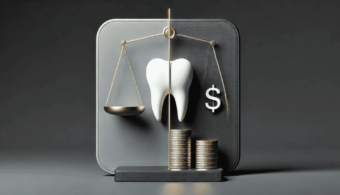Germany, Europe's largest economy, recently announced its exit from recession, with a forecasted GDP growth of 0.4% in 2025. This event has attracted the attention of global economists and policymakers, as Germany has long been under pressure from global economic shocks. In this article, we will explore what lies behind this forecast, the factors that contributed to the country's exit from recession, and what Germany can expect in the coming years. For more detailed information on the global economy, visit G.business.
Why Is Germany Emerging from Recession
Germany's exit from recession became possible due to comprehensive measures aimed at economic recovery. Highly developed economies, like Germany, often face significant economic challenges, requiring systematic and thoughtful responses. Germany began implementing steps to stimulate industry and consumer demand, which positively impacted the economy.
In addition, the German government introduced several economic initiatives to accelerate recovery after the crisis. The influence of external factors, such as global stabilization, also played a role. Growing consumer demand and the recovery of industry are key elements driving positive economic indicators.
To understand the factors behind this, let's examine some of the main contributors:
- Stable growth in industry: In recent months, German industry has shown positive results.
- Support from the government: Economic stimulus measures helped restore the economy.
- Increased consumer demand: Consumers have become more active in their spending, which contributes to economic growth.
- Global stability: The overall improvement in the global economy has also had a positive effect on Germany's economy.
These factors, working together, contributed to the country's exit from recession. The strategies aimed at recovery are already beginning to bear fruit, and the country's economy is gradually restoring its stability.
GDP Growth Forecast for 2025: What Lies Behind the 0.4% Figure
The forecasted GDP growth of 0.4% for Germany in 2025 may seem modest, but for an economy just emerging from recession, it is a significant indicator. Economists point to several factors playing a key role in this growth.
This forecast is based on the recovery of industry, increased consumer demand, and continued economic stimulation measures from the government. Positive changes in the global economy also contribute to the recovery of Germany's economy. Germany is forecasting further improvement, indicating a positive trend in its economic development.
To understand what exactly is behind the GDP growth forecast, let’s take a closer look at the key factors influencing growth:
- Recovery of industry: Germany has traditionally been a global leader in the production and export of cars, machinery, and equipment.
- Government measures: Various economic initiatives, such as tax cuts and subsidies, are supporting domestic demand.
- Increased investments: Germany attracts significant international investments, promoting the development of high-tech industries.
- Global economic stabilization: This contributes to improving the economic situation in the EU and other countries.
These elements are working together to ensure Germany's GDP growth in 2025. The forecast of 0.4% is the first step in recovering from the crisis, and with current trends, we can expect further positive changes in the future.
Structure of Germany's Industrial Growth
Germany's industry has traditionally been the backbone of the country's economy. In recent months, key sectors such as machine engineering, automotive manufacturing, and the chemical industry have shown signs of recovery. These industries are critical to the German economy and are showing positive results.
For Germany, it is essential to maintain and develop these sectors, especially in the context of global economic changes. Investing in innovative technologies and the development of new productions helps maintain global competitiveness. Transitioning to "green" energy also plays an important role in future economic growth.
Here are the key sectors influencing Germany's GDP growth:
| Sector | Description | Impact on GDP |
|---|---|---|
| Machine Engineering | Production of machinery and equipment. | 10% of GDP |
| Automotive Industry | Production of cars, including electric vehicles. | 15% of GDP |
| Chemical Industry | Production of chemical goods. | 5% of GDP |
| Technology and Innovation | Investments in innovation and high-tech industries. | 8% of GDP |
These sectors are driving the growth and development of Germany's economy. It is important to understand that investments in innovation and new technologies play a crucial role in ensuring long-term growth.
The Role of Consumer Demand in Economic Recovery
Consumer demand plays a significant role in Germany's economic recovery. In recent months, there has been an increase in consumer spending. This is linked to improvements in the labor market and rising income levels, which contribute to growing purchasing power.
Increased consumer demand contributes to economic growth by stimulating the demand for goods and services, which in turn helps production sectors increase output. An essential factor is also the restoration of confidence in the economy, which encourages people to spend money on consumption.
Before we look at the influence of consumer demand, it's important to highlight the following points:
- Declining unemployment: The increase in the number of jobs and higher income levels are contributing to higher consumer spending.
- Rising consumer confidence: People are starting to spend money on purchases, stimulating the growth of domestic demand.
- Increased mortgage lending: This helps stimulate the real estate and construction markets.
- Rising demand for high-tech products: More people are investing in new technologies, such as electric vehicles and gadgets.
Consumer demand will continue to play a vital role in the country's economic recovery. Developed economies like Germany show how internal spending can help drive GDP growth during periods of economic instability.

The Influence of the Global Economy on Germany's Growth
The global economy also significantly impacts Germany’s economic growth. Improvements in other countries, such as the United States and China, affect Germany’s foreign trade, helping to stimulate growth. Global stabilization also reduces uncertainty and improves the economic conditions for development.
Germany’s economy heavily depends on foreign trade and international investments. The improvement in the global economic situation, as well as rising commodity prices, is influencing the growth of German production and export volumes.
Key global factors influencing Germany’s economy include:
- Stabilization of oil and raw material prices: This reduces production costs.
- Growth in global demand for German products: A stable global economy contributes to an increase in German exports.
- International investments: Germany attracts significant investments from global investors, which contributes to economic growth.
- Stabilization of global trade: This promotes the restoration of trade relations and improvement in economic conditions.
These global factors create a stable economic environment for Germany, supporting GDP growth and its exit from recession.
Forecasts for the Future: What Awaits Germany in 2026
For 2025, Germany is forecasting modest growth at 0.4%, but in 2026, the economy may show higher results. It is expected that industrial growth, increased consumer spending, and improved global economic conditions will lead to greater economic stability.
It is important to note that full economic recovery will take more time. In 2026, more noticeable improvements are expected if the current economic trends continue.
In 2025, Germany is anticipating modest GDP growth of 0.4%, but this figure is a crucial step toward full recovery from recession. The main factors contributing to this growth include the recovery of industry, increased consumer demand, and continued economic stimulus measures from the government. Global stabilization has also played its role, providing additional opportunities for Germany's economy.
However, Germany will need more time for complete recovery. Forecasts for 2026 suggest higher growth rates, which may signal further strengthening of economic stability. If the country continues on its chosen path and effectively deals with internal and external factors, Germany can expect a stable and prosperous economic future.
Stay connected for news that works — timely, factual, and free from opinion — and insights that matter now: What has changed in legislation for entrepreneurs in Germany in 2025.






